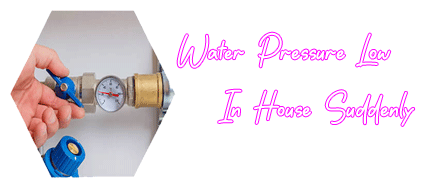Dealing with water pressure issues in your faucet can be frustrating, whether the pressure is too low or too high. Low water pressure slows down your tasks, while high pressure can cause splashing and waste water. Fortunately, you can fix these issues yourself without calling a plumber. Here’s a guide to help you adjust faucet water pressure, including tips for situations when water pressure in the house suddenly becomes low.

If your faucet’s water pressure is low, the most common reason is a clogged aerator. The aerator is a small screen at the tip of the faucet that mixes air with water to create a smooth flow.
Steps to Fix Low Water Pressure:
Check if the aerator is clogged. Remove it using pliers, but be careful not to scratch the metal.
If removing the aerator is difficult, tie a cloth soaked in vinegar around the faucet and leave it for a few hours. The vinegar will loosen the buildup.
If vinegar doesn’t work, spray WD-40 on the aerator, let it sit for a few minutes, and then try removing it again.
Test the water pressure to ensure it has improved.
2. Address High Water Pressure
If the water pressure is too high, it may indicate that your faucet doesn’t have an aerator or the existing aerator is allowing excessive flow.
Steps to Fix High Water Pressure:
Check the end of the faucet for a wire mesh — this is the aerator. If it’s missing, install one to regulate the water flow.
If your faucet already has an aerator, look for printed information on the side, such as the flow rate in gallons per minute (GPM). Standard faucets in the U.S. typically use 2.2 GPM aerators.
If you want to reduce the water pressure, purchase a lower-flow aerator (e.g., 1.5 GPM or lower) and install it.

3. Inspect Under-Sink Valves
Steps to Adjust Valves:
Turn off the faucet and check if the valves are fully open.
If needed, adjust them carefully to increase water flow.
4. When Water Pressure in the House Suddenly Drops
If you notice a sudden drop in water pressure across the house, not just in a single faucet, the issue might be broader.
Check for These Common Causes:
Leaky Pipes or Valves: Inspect for leaks in visible pipes and ensure all valves are fully open.
Pressure Regulator Issues: A malfunctioning pressure regulator can cause sudden drops in pressure. This device is usually installed near the main water supply line. Contact a plumber to inspect and adjust or replace it if necessary.
Clogged Pipes: Older homes with galvanized iron pipes are prone to corrosion, which can block water flow. If this is the case, consider replacing the pipes.
5. Regular Maintenance Tips
Replace old, corroded valves and supply lines with modern steel-braided ones to prevent blockages.
Install aerators on all faucets to maintain consistent water pressure and reduce water waste.
6. When to Call a Professional
If you’ve tried the above fixes but still experience low water pressure in the house suddenly, it’s time to call a licensed plumber. A professional can identify hidden problems, such as underground pipe leaks or issues with the municipal water supply, and fix them effectively.
Regularly checking and maintaining your faucets and plumbing system can help prevent water pressure issues and prolong the life of your fixtures. Don’t ignore water pressure problems, as they can escalate and cause more significant damage to your home.



